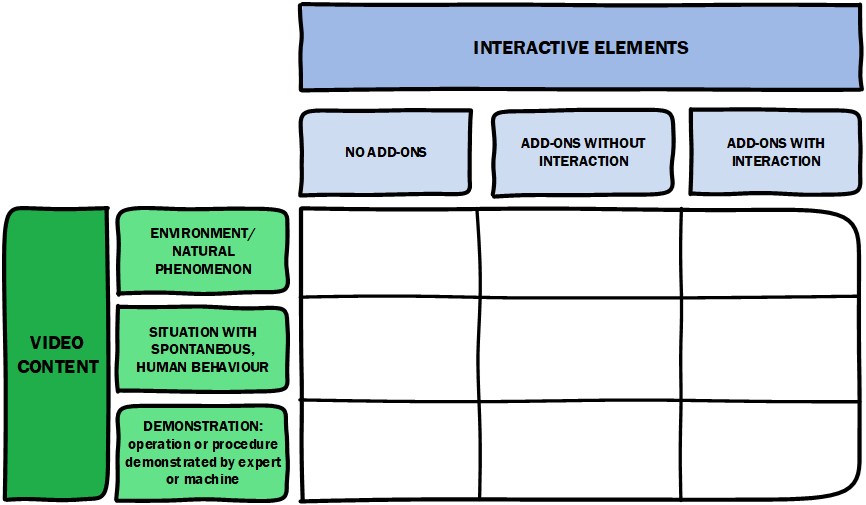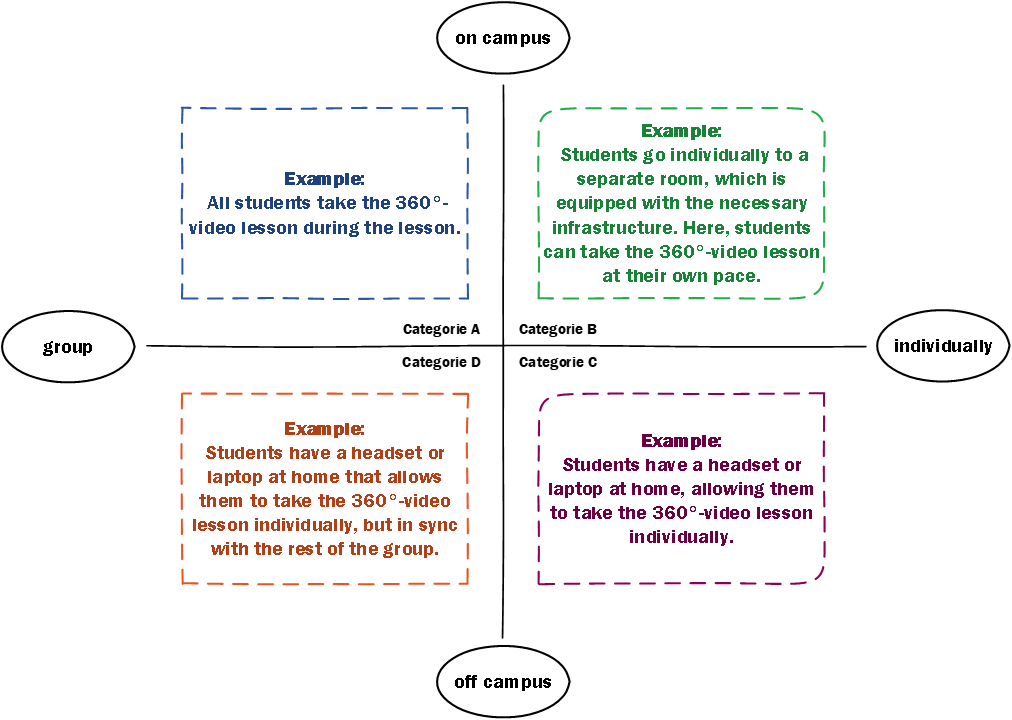Preparing the recording
Before moving on to filming, it is important to prepare the recording. Since every context is different, the needs will also be different. Therefore, start by analyzing your own context and create a storyboard:
- Learning goal(s) of the 360° video lesson: clarify and concretise what the goal of the 360°-video lesson is.
- Typology: specify the type of 360°-video lesson. This will influence the degree of control in the 360°-video lesson and the degree of flexibility, as shown in the figure below.

- Target group: clarify who the target group is.
- Profile of end users: concretize the target group and describe their profile. Think of the following aspects:
- What is the prior knowledge of the end users?
- Are there end users with specific needs?
- Is there any other important information that needs to be taken into account, before proceeding to the recording of content?
- Preparation: think about the needed preparation. Does the designer and/or the end user need to prepare something?
- Implementation: concretise how the implementation of the 360°-video lesson will take place. For example, will this be done in a group on campus, or individually and not on campus? This will also determine the pedagogical and technical points of attention.

- Pedagogical points of attention: Are there specific pedagogical points of interest? Think for example of providing extra time for certain students, or providing extra interaction points that are not mandatory.
- Technical points of attention: are there specific technical points of interest? Think for example of the infrastructure:
- Are there sufficient sockets?
- Do students need their own laptop?
- Do students need an internet connection?
On the basis of this analysis it is possible to develop a storyboard as a lesson preparation / blueprint. The following template is freely available, to prepare this lesson preparation / blueprint.
After shaping the lesson preparation / blueprint, one gets a more concrete view on the material that is needed and how long the recording should last. You can choose to film the footage yourself, but it is also possible to leave this to a cameraman or other person. With the latter option, it is important to communicate transparently, to avoid wrong or insufficient footage. The template in the document below, can provide a guide to prepare the blueprint of the recording. So, this can be used in a situation where the designer will record the content himself, as well as in a situation where the recording of the content is outsourced.
